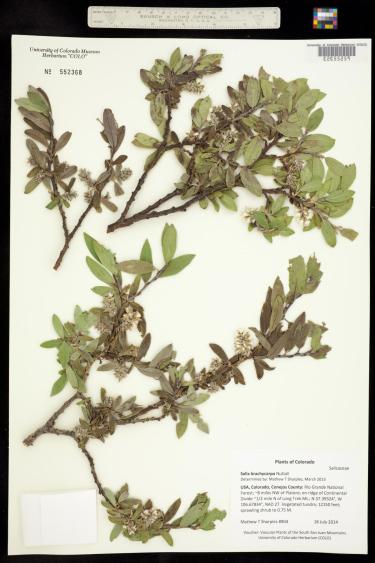This week’s WoW is the Short-Fruited Willow (Salix brachycarpa)— a medium-sized shrub that grows in Colorado’s moist meadows and wetlands of the subalpine and alpine zones (10,000-14,000 feet elevation). It is widely distributed in the northern latitudes of North America and southward along the western mountains. Wetlands dominated by willows are a rich habitat for songbirds, such as white-crowned, fox, and song sparrows, as well as Wilson’s, yellow, and orange-crowned warblers. Deer and elk like to browse the spring twigs. 
Willow habitat gives a new word for the week—carr. A carr is a waterlogged wooded terrain that is dominated by shrubs rather than trees. It is part of a temporal ecosystem progression from wetland to forest. Carrs typically occur at the uppermost headwaters of our watersheds, serving as natural purifiers of the water we drink. The largest willow carr in the Front Range is located in Boulder County along the North St. Vrain Creek1.
Over thirty species of Salix are found in Colorado—they are in the same family as cottonwoods (Family=Salicacaea; Genus=Populus). Both groups usually occur in moist habitats, with cottonwoods often being restricted to stream channels, and willows more widely distributed in wetlands, near springs, as well as along streams. Another difference between the two genera is Salix is pollinated by bees, while Populus is wind pollinated.
The use of the willow for pain relief goes back thousands of years—it is the source of our modern aspirin. The effective ingredient from Salix is salicin, from which salicylic (sa·luh·si·lik)
acid was synthesized in the 19th century. Traces of saliciylin were found on 1,300-year-old pottery unearthed in eastern Colorado2. One might wonder if browsing animals also find some relaxing pleasure in their spring twigs.
Finally, you might notice a small, folded envelope in the corner of this botanical specimen. It holds parts of the plant that are not easily taped or glued to the paper—most often seeds.
